by Management 3.0 Facilitator, Erick Masgo, and Karol Valencia & Grisel Villaverde, members of the Management 3.0 Peru Community who participated in the workshop
This is the success story of a fabulous Meetup and workshop conducted by a group from the Management 3.0 facilitator community in Peru. They’ve shared their thoughts and experiences in this post.
#1: Let’s Start With The Meet Up
The Legal Design workshop was created to publicize how design thinking or Design Thinking can be applied to different sectors and areas of knowledge such as legal.
Among the attendees were not only lawyers, but also engineers, administrators, human resources, and management leaders, among others.
Design Thinking is a way of thinking to develop people-centered innovation, to observe needs and through five stages, solve the problem by adding value for people.
It consists of a series of stages that can be returned to iteratively, but which you must pass through at least once.
Empathy
The first phase of the Design Thinking process is to empathize, since it is user-centric and part of a discovery of people’s needs, desires or motivations. Leveraged at this stage, we wanted attendees to empathize with each other and get to know each other, so we use a Management 3.0 practice called personal maps.
The facilitators showed participants their personal maps so that people could develop their own and understand more about each member of their group and identify their motivations.
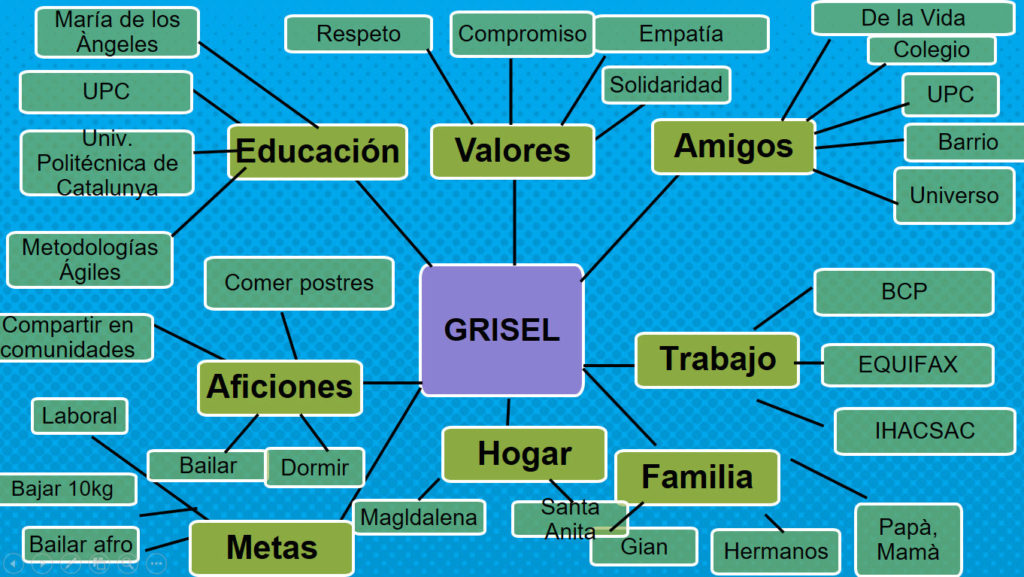
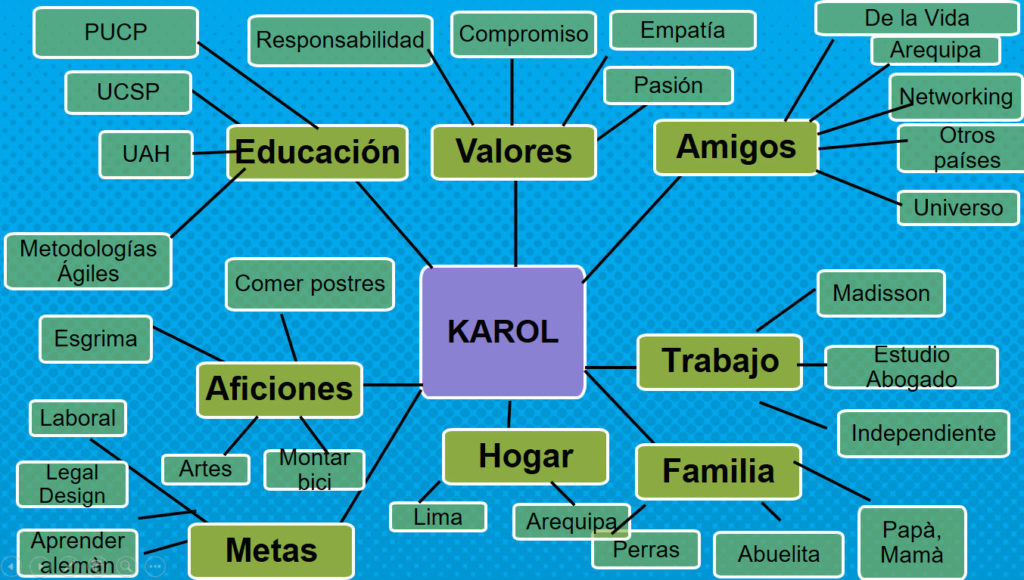
To develop the workshop, we identified, four public figures from Lima and Peru and tried to understand their problems. From these people were were able to create products or legal services that could generate value and solves problems. Participants did social research, looking for information on their phones about the person, trying to see him or her as a human being, beyond what they saw in the news. In addition, we used Moving Motivators so that each member could identify the motivations of the character assigned to each group. Moving motivators allows you to identify personal motivations and align them to your purpose and the team’s purpose.
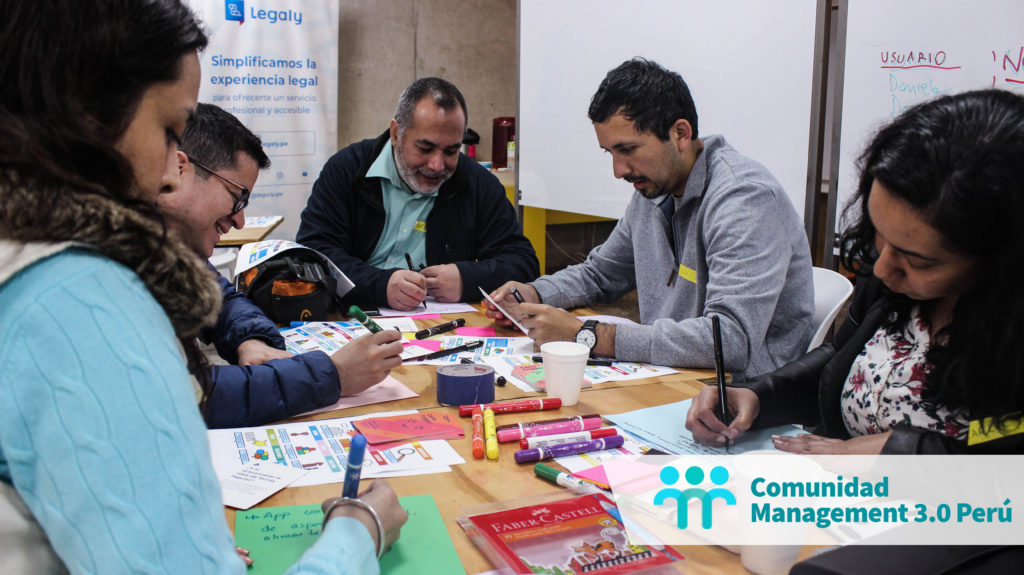
#2: Definition
After the high volume of information from social research and Moving Motivators, we downloaded all the information in order to find insights. Insights are hidden truths that are found from the stage of empathizing with users. Once the insights were found, participants developed the: How Might We tool, to ask the questions that will lead them to action through the next stage of Ideation.
#3: Ideation
At this stage we tried to generate solutions for the identified customer insights. We relied on trigger cards to encourage the generation of ideas among teams.
#4: Prototype and Storytelling
We taught participants to use Improv Cards because through this, they can better empathize with internal and external customers and break the ice a little before starting a work session, or delivery to the final client. They can do this through storytelling and using the images that appear on the Improv Cards, in order to have the best ideas and prototypes before proceeding to verify or test them.
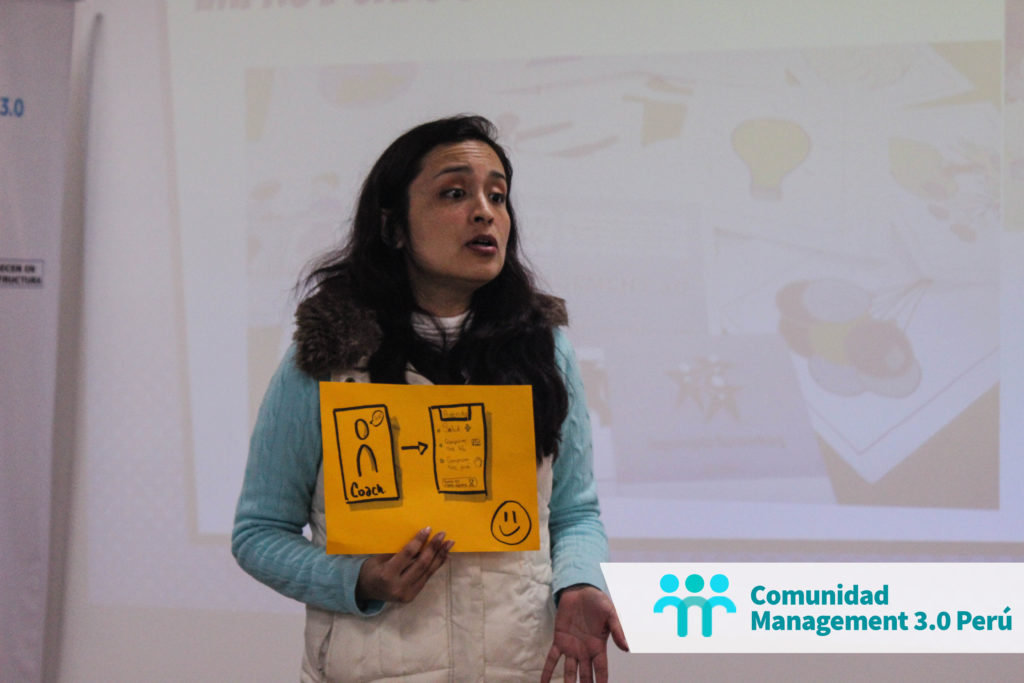
#5: On Legal Design Thinking
It was great to be able to use the Management 3.0 practices during the different learning stages of this legal design thinking workshop in order to optimize, design or redesign excellent legal services.
By applying Management 3.0 tools to the phases of the Legal Design Thinking process, we were able to propose ad hoc solutions for each client at the idea stage, using moving motivators, and present the most creatively viable solutions in the prototyping phase using improv cards.
#6: Feedback from the Happiness Door
In order to know the impressions of the teams participating in the session, and to know if we were on the right track, we wanted feedback. Almost everything was positive and we also got some valuable suggestions to improve. The feedback door is a great way to do this!
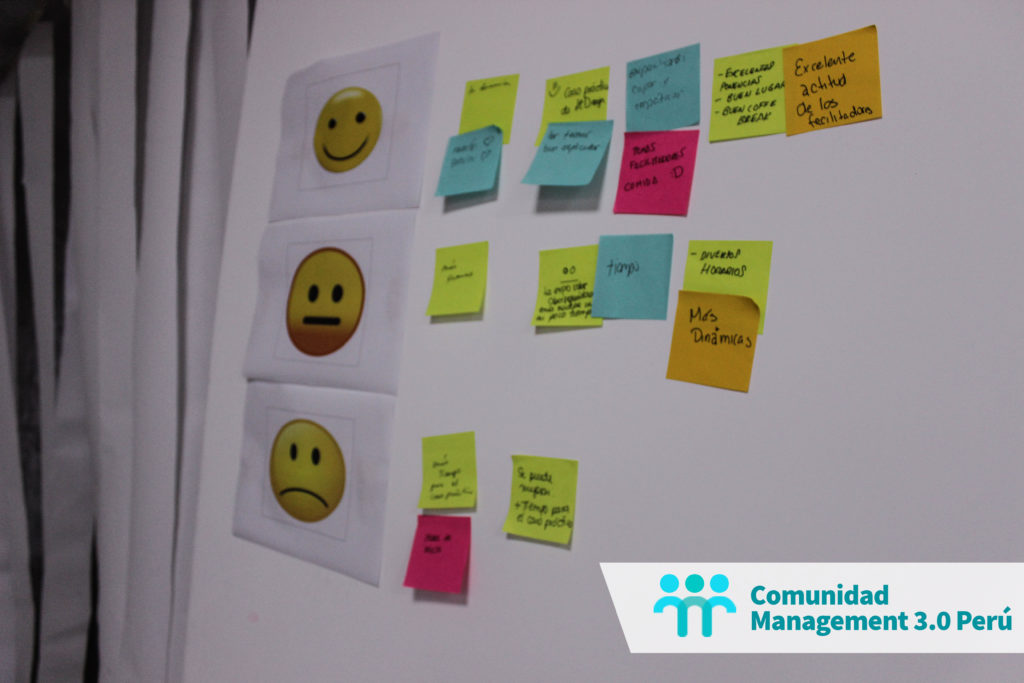
All in all it was a fabulous event and we’re so happy that we came together, as facilitators to share Management 3.0’s practices with our community.
Photo Credit: All photos can be credited to the Peru Management 3.0 Community

